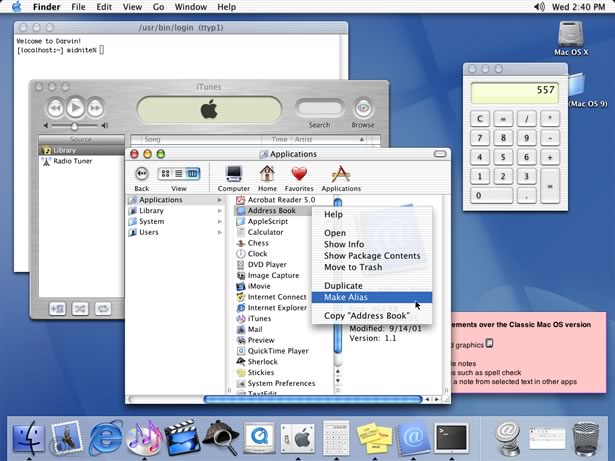As technology has transformed over the years, Graphical User Interfaces (GUIs) have played a critical role in how humans interact with their computers. The evolution of interfaces from the command-line to the visually rich environments we see today marks significant milestones in the journey of Mac OS, Linux, and Windows. This article dives into the history and development of these operating systems, highlighting key moments that shaped their GUIs.
The Beginnings of Graphical User Interfaces
The concept of GUIs predates the personal computer era, dating back to the 1960s with the Stanford Research Institute's development of the oN-Line System (NLS) and Xerox PARC's work in the 1970s, including the development of the Alto, the world's first computer with a desktop metaphor GUI. However, these ideas didn't reach the broader public until the release of personal computer systems from Apple, Microsoft, and various Unix-based systems, including what would evolve into Linux.
Mac OS: Innovation and Aesthetics
The Era of Macintosh
Apple revolutionized the GUI with the introduction of the Macintosh in 1984. The original Macintosh System Software brought windows, icons, a menu bar, and a mouse-driven interface pioneering elements of modern GUIs. Over the years, Apple continued to innovate.
From Macintosh System Software to MacOS
Throughout the late 1980s and 1990s, Apple iterated on its System Software, eventually rebranding it as Mac OS. The introduction of Mac OS X in 2001 was a significant leap forward, with its Unix-based architecture and the Aqua interface, known for its visually appealing design with translucent elements and drop shadows. Apple has continued to refine its operating system with releases such as MacOS Big Sur and MacOS Monterey, incorporating features like the Control Center and streamlining the aesthetics for an increasingly elegant user experience.
Linux: Customization and Open Source
The Genesis of Linux GUIs
Linux, an open-source Unix-like operating system, presented a different path for GUI development. Initially operating predominantly in a command-line environment, it welcomed GUIs through contributions from the community.
The Rise of Desktop Environments
The flexibility of Linux is evident in its variety of desktop environments. X Window System, introduced in the mid-1980s, laid the foundational layer from which GUIs like GNOME and KDE Plasma were born. With an emphasis on customization, Linux desktop environments offer users a myriad of choices to alter their visual and operational preferences. The evolution of projects like Ubuntu's Unity and Gnome Shell showcases the Linux community's ongoing commitment to GUI advancement and usability.
Windows: Dominance through Evolution
Windows 1.0 to Windows 95
Microsoft embarked on its GUI journey with Windows 1.0 in 1985, evolving DOS's command-line interface into a more graphical one. However, it was Windows 95 that truly transformed the PC market, introducing the iconic Start Menu, taskbar, and minimize-maximize-close button trio that became staples of Windows interfaces.
The Evolution Continues: Windows XP to Windows 11
Building on this, Windows XP introduced a more colorful and user-friendly interface, followed by Windows Vista, which aimed at a more visually appealing design with the Aero Glass theme. Despite facing criticism for performance and compatibility issues, these iterations paved the way for Windows 7, a refined and well-received version. The journey continued with Windows 8's introduction of a touch-optimized interface, followed by Windows 10, which aimed to strike a balance between touch and traditional desktop use. Currently, with Windows 11, Microsoft continues to refine its GUI, offering rounded corners, a centered Start menu, and new iconography reflective of the latest aesthetic trends.
The Common Themes in GUI Evolution
Throughout the development of Mac OS, Linux, and Windows, several overarching themes emerge:
The Shift Towards User-Friendly Design
Early GUIs prioritized functionality over form. As computing became more mainstream, the focus shifted towards making operating systems more accessible and visually appealing to a broader audience.
The Role of Innovation and Competition
The evolution of GUIs has been significantly influenced by competition among developers and operating systems, driving innovation and leading to a rapid iteration of ideas and designs.
Customization and Personalization
As user expertise varied, operating systems began offering more personalization and customization options. Linux, in particular, embraced this theme early on through its diverse array of desktop environments.
The Integration of Web and Multimedia
The Internet and multimedia capabilities have increasingly been integrated into the fabric of GUIs, affecting not only aesthetics but also functionality transforming operating systems into hubs of digital life.
Conclusion: Looking to the Future
The history of GUIs is a testament to the dynamic interplay between technology and usability. As we trace the evolution of Mac OS, Linux, and Windows, it's evident that the transformations go beyond mere aesthetic changes reflecting shifts in how we engage with our devices. While it's impossible to predict the future accurately, ongoing advancements in artificial intelligence, virtual reality, and voice interfaces may hold the key to the next significant leap in GUI development.




0 Comments
Post a Comment